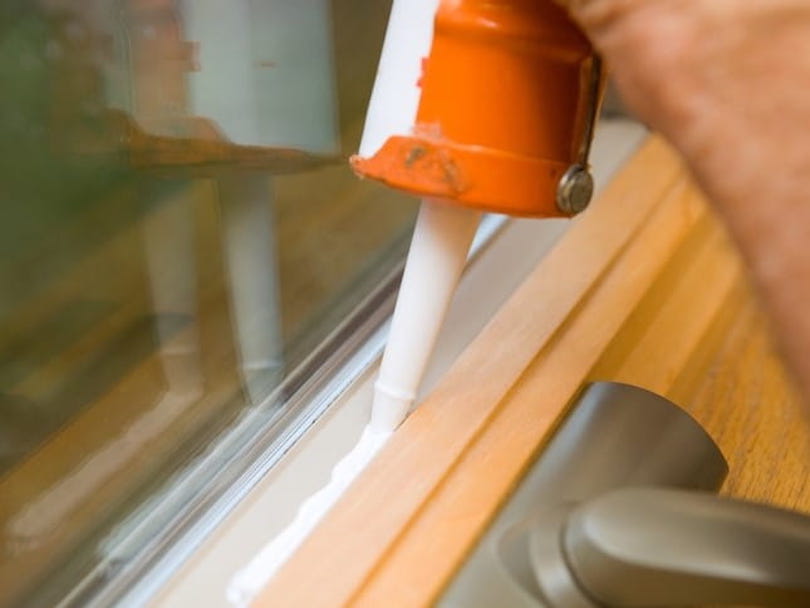How to Get Caulk Off Hands
When bathtubs, showers, and sinks in your bathroom contact the wall, silicone caulk is frequently used to repair the gaps between them. Since it might be challenging to deal with, research and practice are frequently advised to provide the clearest, most expert outcomes. Even with experience, mistakes are simple to make, and caulking can end up everywhere. But how to get caulk off hands? It can be particularly tough to get this substance off of your hands, but if you’re ready and act quickly, you can wipe it off without too much trouble.
What is the use for caulking?
It’s kind of like magic that you use on your house to avoid having to do expensive repairs. Water can rot wood if it enters the structure of your house (roof, walls, or floors), which is expensive and time-consuming to fix. Mold and mildew are also encouraged by the wet climate, which may result in additional health problems. Therefore, caulking is vital to avoid such issues.

Where to Caulk the Exterior of Your Home
To prevent rain and snow from leaking into cracks and joints and rotting wood and blistering paint, caulking forms a tight barrier. In order to keep the temperature where you want it, rather than where Mother Nature dictates, caulk is also utilized to lessen draughts.
Common places where exterior caulking is required:
- Where wood siding on an outside wall meets window and door frames. These frames are constructed of horizontal and vertical components, many of which require caulking where they meet.
- Caulking can fill any gaps where wood siding creates corner joints or meets corner trim. On vinyl trim pieces, however, avoid caulking vinyl siding to the channel. Vinyl moves a little bit with temperature fluctuations, much like wood does.
- At the places with intersections of various building materials, such as brick and wood siding.
- You should caulk any openings, gaps, or cracks in your siding, stucco, brickwork, or foundation (for bigger gaps, use an expanding foam sealant like those produced by Great Stuff and 3M). Remember to pay attention to any openings where vent ducts, air conditioners, wiring, or plumbing enter the structure.
- Examine the gutter end caps, seams, corners, and downspouts on the roof. It’s also a good idea to caulk any chimney, vent, or skylight openings that are through or up against the roof.
- The undersides of window trim, door trim, or siding made of clapboards shouldn’t be caulked. This allows any stored moisture in the structure to escape.
Steps to remove caulk from your hands
1. Obtain supplies
When you start caulking, it’s crucial to have all of your supplies close at hand because the secret to getting silicone caulk off is to not let it dry. If it does, you’ll have to wait while your skin goes through its normal shedding process as you wait for it to fall off on its own.
2. Avoid Caulk from Sticking
When spreading and polishing a silicone bead, your fingers are frequently needed. This might imply that you will inevitably get caulk on your skin. However, by employing the proper methods, you may make sure that the least amount of material adheres to your skin.
Always wet your palm before going over the bead with your fingertips. Your hands will stay cleaner if you take care to keep your skin wet before it makes contact with the caulking.

3. Get Your Hands Ready
You still need to know how to get rid of any caulk that does stick because even using the right approach won’t guarantee that you stay entirely caulk-free. Take a plastic bag and wipe your hands over it to get started. The plastic will reduce your skin’s excessive slickness, which will also make them easier to clean.
Make use of nail polish remover or rubbing alcohol.
To get rid of as much caulk as you can, take a cloth and rub rubbing alcohol or acetone fingernail polish remover all over your hands. Make cautious not to scrub too vigorously as this can irritate and dry out your hands.
4. Use a soap
Wash and dry your hands after washing them with soap and water. If the alcohol or acetone dried up your skin too much during the procedure, using a moisturizer afterward can assist.
5. Use baby wipes
It has also been reported that regular baby wipes can remove silicone caulking. Remember that this procedure will probably take some time and a number of wipes to accomplish, but since you’re not using strong solvents for removal, it might be better for delicate skin.
In the event of accidents, this is how to get caulk off hands. Try these steps and you won’t have to struggle anymore.
